The MSI Z170A SLI PLUS Review: Redefining the Base Line at $130
by Ian Cutress on April 13, 2016 8:00 AM EST- Posted in
- Motherboards
- MSI
- Skylake
- Z170
MSI Z170A SLI PLUS Software
A large portion of this page will be identical to the MSI Z170A Gaming M7 review, updated for specific features for the Z170A SLI PLUS.
In line with everything else in the motherboard space, MSI’s software package also gets an iterative update with the new Z170 platform. In previous years, we have heralded MSI for providing some of the best automatic update software available for motherboards with Live Update 6, which continues in the Z170 package. On the other side of the spectrum, we’ve criticized MSI for offering a 2.1+ volt user-facing setting for the processor in software with virtually no safety fence as even sub-zero overclockers do not go that high. Perhaps somewhat ambivalently, this is still true with Z170 as well, although to a lesser degree.
The first thing noticeable with an installation from the driver disk is that MSI puts in a custom logo / background:
It might sound superfluous, but in most PCs built today, users do not know the motherboard make inside. So by implementing a custom background design on installation, even if it is changed, at least the user gets another hint about what is inside. It’s also a no-brainer. This sort of background appeals to a wide range of users who would be buying this motherboard, and it is such as easy near-zero cost value-add to a system bundle I am surprised that not many other motherboard manufacturers do it.
Live Update
The Live Update tool continues is usual display pattern, available to regularly check for updates and showing what drivers/utilities are available online that can be updated to the next version. In recent versions of this software MSI has included the size of the download as well as the current/online versions to allow users to make a more informed choice.
We had no issues with this software, and it still remains one of the easiest update tools from motherboard manufacturers to use.
Fast Boot
One of the tools I love to see in motherboard software packages is a fast boot / restart in BIOS mode option. This is partly selfish – when testing the system it makes it easier to enter the BIOS through this method rather than repeatedly pressing F2/Del during a long POST sequence, but it can yield benefits for those who like to fine tune their system over several months.
Customized CPU-Z
CPU-Z is a shareware tool used by some enthusiasts to get details about their processor and system, but also to verify overclocks and the whole package is used as a verification tool when it comes to competitive overclocking, featuring in screenshots. As a result, the developers of CPU-Z allow manufacturers to develop skins (for a fee) for the software and distribute as necessary. MSI went in with this for the gaming range, and the gaming version is included in the bundle.
M-Cloud
Having a personalized home storage cloud, as opposed to just having home storage, is starting to become a thing. As a result, some motherboard manufacturers have started to include software to make this possible using their products – typically this software is just a skinned variant of a licensed package.
RAMDisk
MSI’s RAMDisk utility has been part of the package for a couple of years, with the concept being that users with large amounts of DRAM might want to partition some of it into a quick read/write cache valid when the system is in use. In the last generation we lamented the fact that the tool needed to enable a RAMDisk before you could adjust the size – this changes with Z170 by implementing a small 256MB RAMDisk on install, and it becomes a separate software element in its own right.
Intel XTU for MSI
The Extreme Tuning Utility from Intel is now an easy gateway to allow users to both overclock and benchmark their system. Some motherboard manufacturers include it with their driver packages, although anyone with a modern Intel based system can download it and see more information about what they have.
We also ran the XTU benchmark, and scored 1238. The screenshot is in the photo gallery below.
MSI Command Center
The previous implementations of MSI’s software have focused around the Command Center, with the idea that the other tools would all be accessed through this hub. For Z170 that idea has sort of melted away, leaving Command Center as a tool for overclocking, fan adjustment and monitoring.
From previous versions of the software, not a lot has changed. RAMDisk as mentioned above has been removed into its own package, and the OC Genie functionality has been updated for the new automatic overclock tool.
My main criticism of this tool is still here, although MSI have at least adjusted the severity – the voltage overclock dial still shows ‘1.55 volts’ as the maximum to which the CPU can be placed (it used to say 2.1 volts). This is despite the fact that this voltage will cause the system to overheat pretty quickly under air/water cooling and potentially damage the processor, the motherboard or something else. Sub-zero overclockers (and some extreme water setups in air conditioned environments) go this high, so it is a little extreme for 99% of users. What I would like to see is it go from 0.9V to 1.3V, and then require an ‘advanced mode’ button which would unlock anything above 1.3V.
OC Genie only has one mode here, and 4.4 GHz is a reasonable overclock for an i7-6700K. Your mileage may vary, as our CPU was not completely stable with the OC Genie setting (it failed OCCT after 4 minutes).


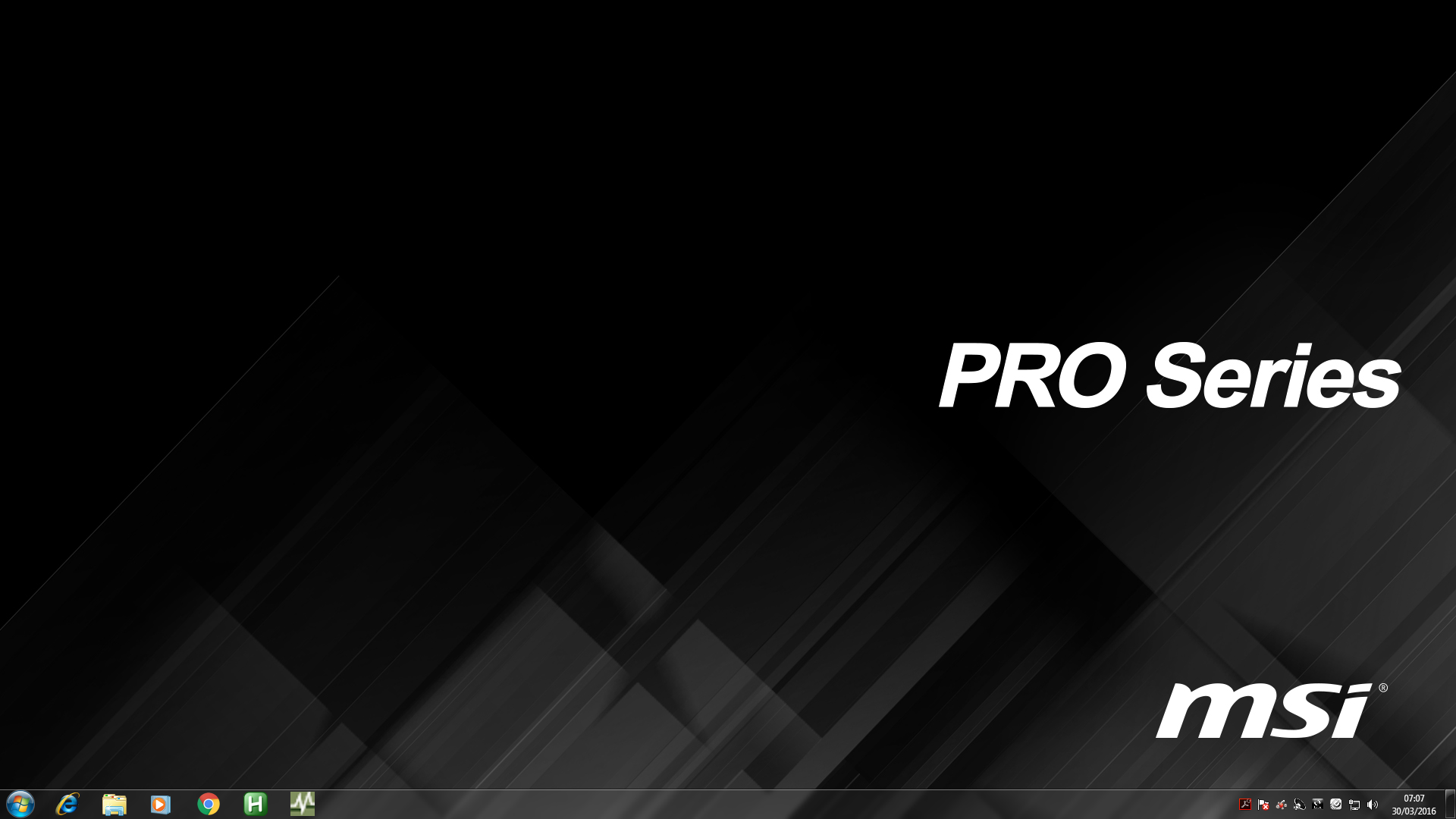
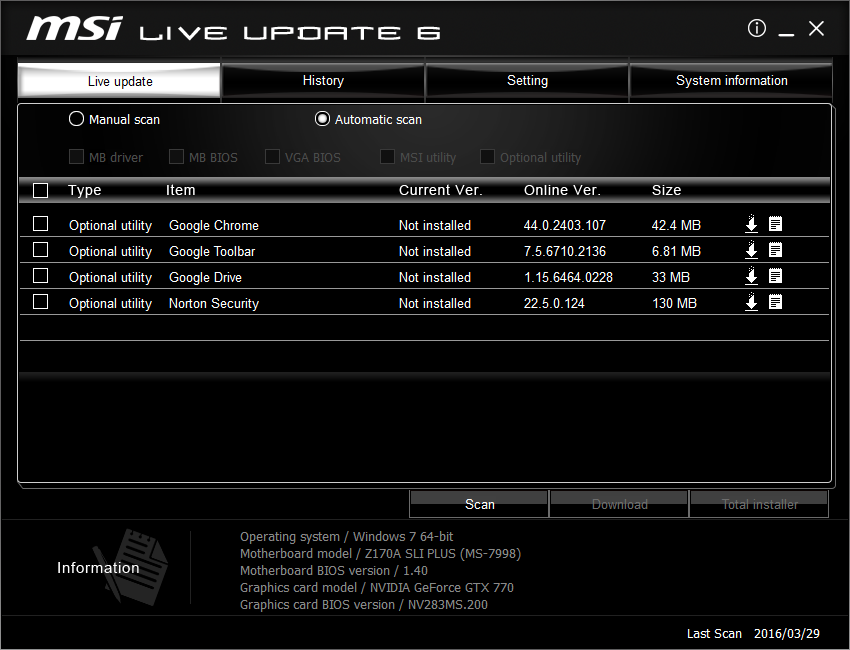
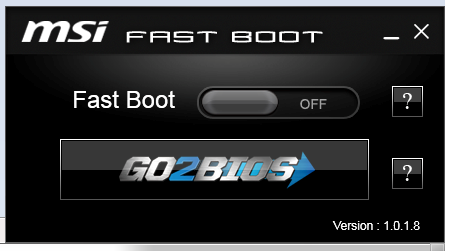
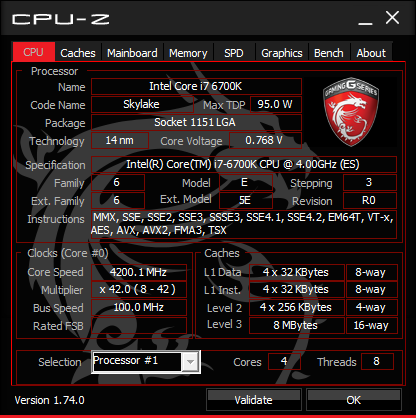


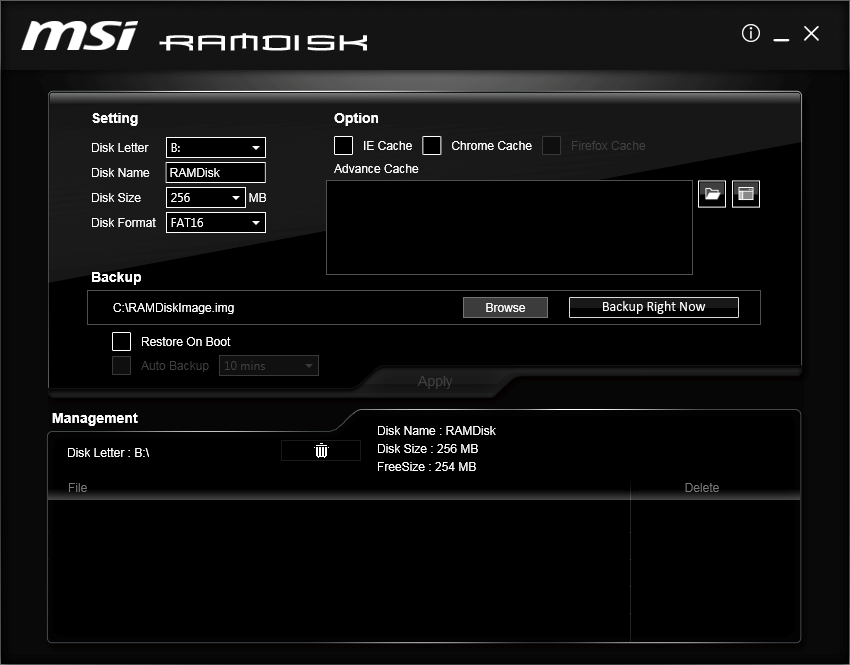
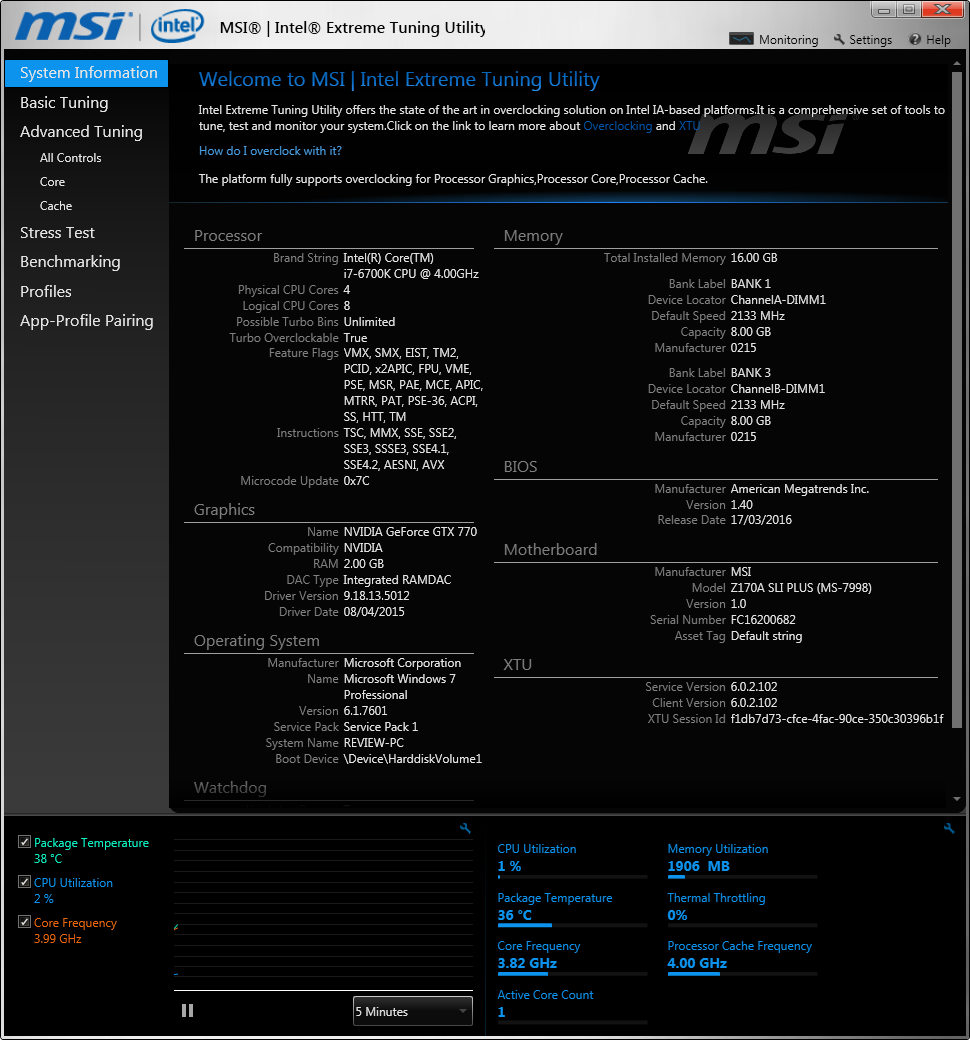
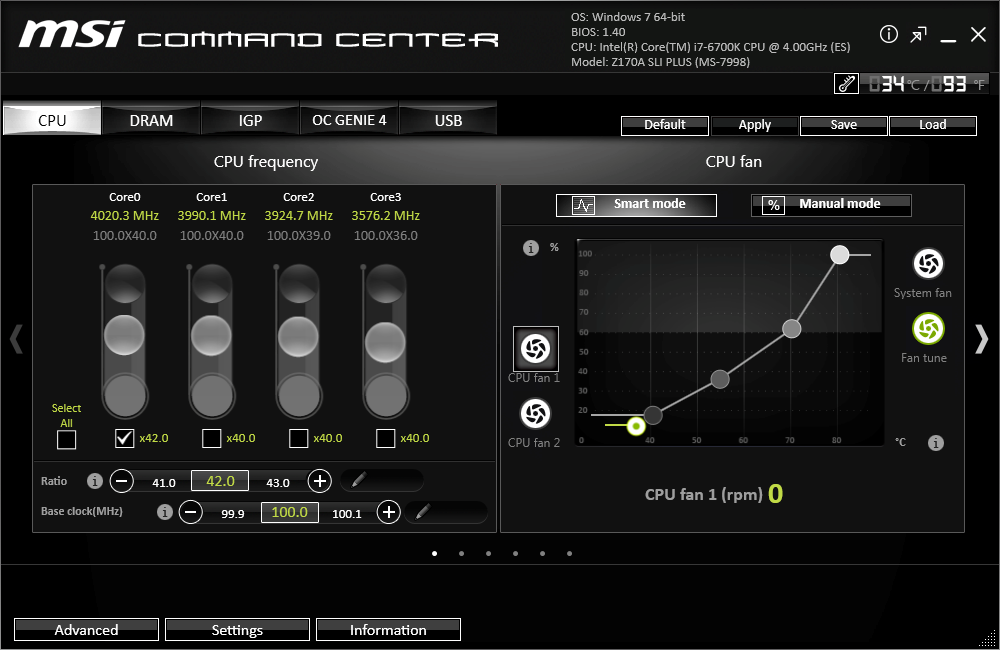
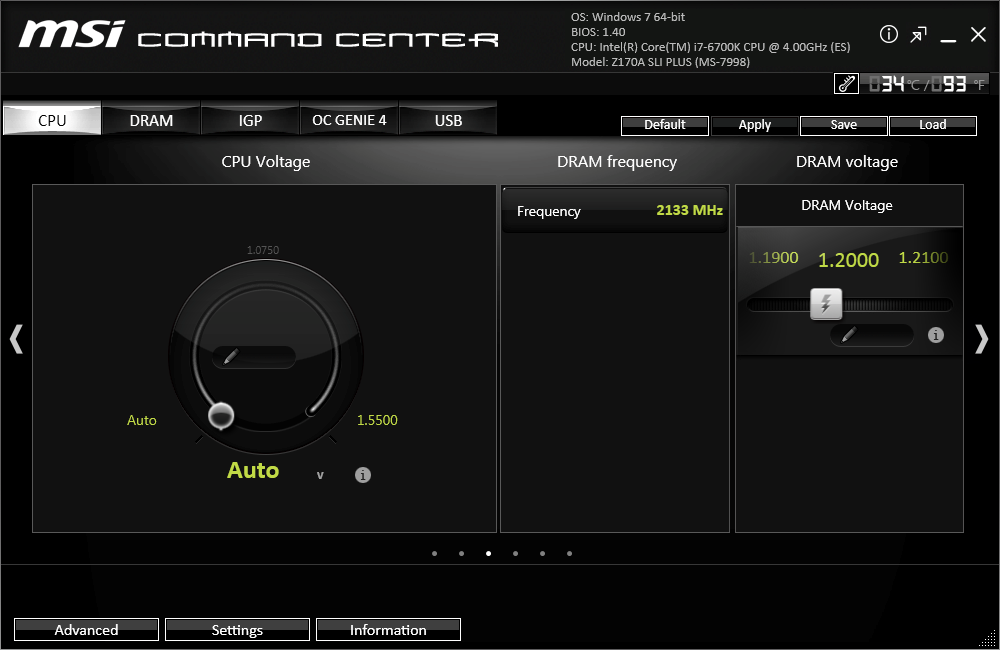
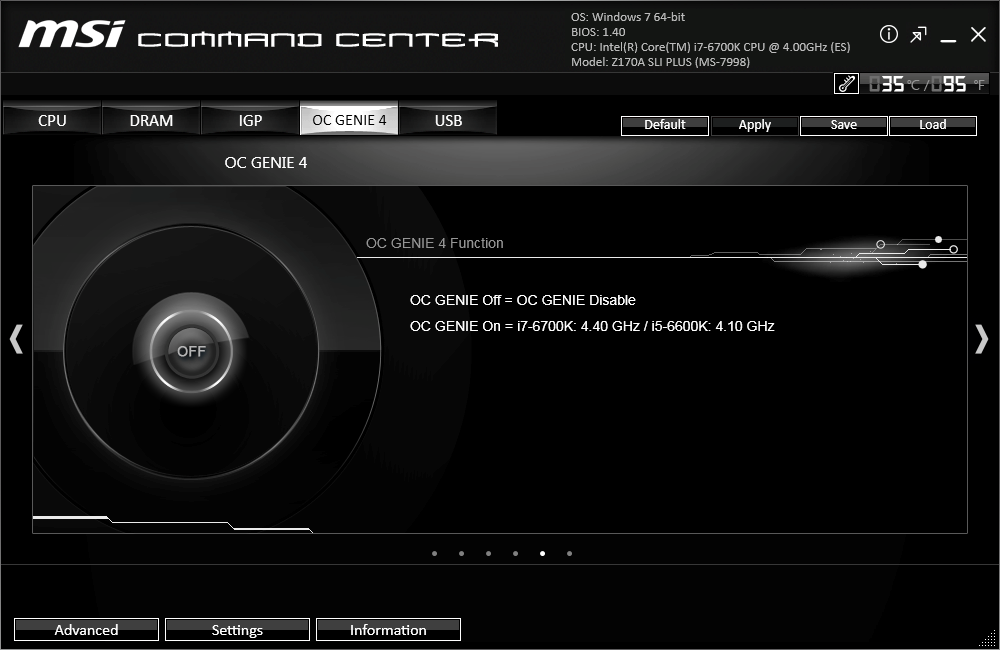














62 Comments
View All Comments
thetuna - Wednesday, April 13, 2016 - link
Your data for the Gigabyte UD5 is very wrong (I own it).It has 4 dimm slots, 0x u.2, 1x m.2, and the pcie slots do either 16+4 or 8+8+4.
Idk what else is wrong there...
DanNeely - Wednesday, April 13, 2016 - link
It looks like it's pulling data for a different board entirely. The shopping link is for an Asus mITX board; that appears to have the specs shown here.Gunbuster - Wednesday, April 13, 2016 - link
Somewhere a warehouse slightly less full of overstocked PS/2 ports is happy.hansmuff - Wednesday, April 13, 2016 - link
I like my PS/2 ports, NKRO is a given and hardware interrupts > software interrupts.Ikepuska - Wednesday, April 13, 2016 - link
I really applaud MSI for this board. It's a great price point for a compelling product.Unfortunately I'm going to be sitting skylake out it looks like. I'm waiting to see what the kaby lake refresh might bring in terms of motherboards because U.2 is really really hard to find in a 170 series for a sane price.
The honest truth is that I hope for fewer SATA ports and no SATA Express ports in kaby. Because of the longevity of the cpu performance nowadays I really want 2 or more U.2 ports, ideally one M.2 port for a boot drive. I'd be willing to give up all or almost all sata ports for such a mythical board. (Not that a board with no sata ports would ever sell yet.)
dreamcat4 - Wednesday, April 13, 2016 - link
> I'm waiting to see what the kaby lake refresh might bring in terms of motherboards because U.2 is really really hard to find in a 170 series for a sane price.Well I can understand people wanting to wait for Kaby Lake now. SInce its so near. However lack of U.2 ports isn't really one of them. For one thing, very few products are coming out with U.2. Making it next-to-useless.
Secondly, there do already exist very simple m.2 --> U.2 adapters. So with one of those, then any cheap Z170 mobo with an x4 m.2 slot should work fine. In fact mine has 2 of them, and its not even classed as a mid-range board. (Gigabyte Z170X Gaming 3). And using m.2 --> U.2 adapter is the more flexible solution. Since for some reason theres no adaptors available on the market which can go the other way around.
jasonelmore - Wednesday, April 13, 2016 - link
F Kaby Lake, we all waiting for Skylake EPIkepuska - Wednesday, April 13, 2016 - link
While I agree that U.2 is nascent, I still had a functioning 2009 board as of this year in use. The truth of the matter is that people still have Sandy and Ivy systems as their main gaming rig. So while yes, there are adapters and add-in cards that would serve the purpose of providing U.2 connectivity, I'd rather have the right ports available and grow into them so to speak. Since I'm looking at keeping the next platform I build for about 8 years or so.Manch - Thursday, April 14, 2016 - link
Wouldn't use this as my main rig board but a media center mid range gaming pc for the living room this would fit the bill nicely.kaesden - Wednesday, April 13, 2016 - link
Had this board been out a few months ago, i'd probably have gone with this over my Asus board and saved a hundred bucks.